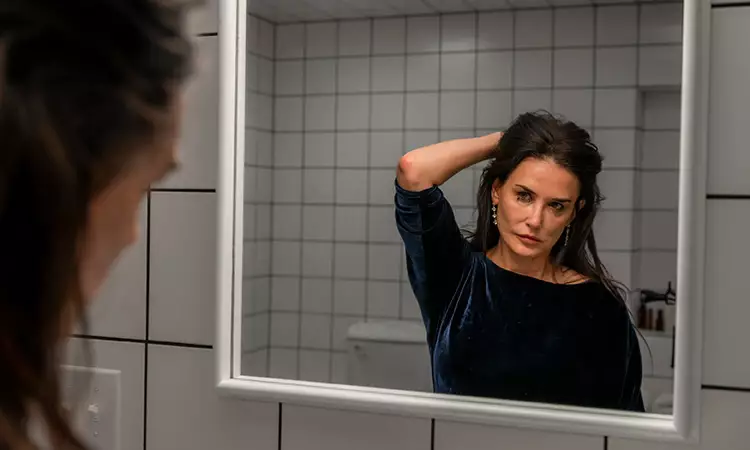The struggle for female empowerment within a patriarchal society has been a focal point for many artists and filmmakers. In her insightful references, Angela Carter’s “The Sadeian Woman” and Leslie Fielder’s “Love and Death in the American Novel” remind us how historical portrayals of women often serve to limit their freedom and identity. This critical notion resonates with the visceral and unsettling portrayal of beauty standards in Coralie Fargeat’s film “The Substance.” Portrayed by the talented Demi Moore, Elisabeth Sparkle, an aging aerobics instructor, becomes a vessel for exploring the grotesque extremes women endure in their quest to conform to societal expectations.
Elisabeth’s journey is not merely a personal tragedy; it reflects a broader societal issue confronted by women. As she grapples with the threat of being replaced by younger talent, represented by the character Sue (Margaret Qualley), the pressures of maintaining relevance can lead to desperate decisions. This emotional turmoil exposes the dark side of the pursuit of eternal youth, showcasing how deeply embedded the ideals of beauty are within the culture. The film masterfully illustrates that these notions are not innocuous but result in turmoil, forcing women to navigate a violent landscape rife with intimidation and competition.
Fargeat’s cinematic craft evokes strong connections to horror’s history, channeling influences from cinematic auteurs like David Cronenberg and Gaspar Noé, creating a rich visual tableau that accentuates suffering and beauty simultaneously. Her stylistic choices, particularly the retro 80s aesthetic, offer sharp commentary on contemporary beauty ideologies, merged with a satirical lens that underscores the absurdity of societal expectations. Every frame pulsates with a provocative energy that highlights the malice of the system, exposing how, in many ways, women are relegated to objects of male desire, orchestrated by those in power.
The use of odd camera angles and exaggerated character portrayals further enhances the film’s commentary while creating a surreal, disorienting experience that feels both familiar and grotesque. The contorted depictions of women’s bodies symbolize the pressure exerted upon them, distorting their reality until it becomes nearly unrecognizable. Such visual metaphors work tirelessly to expose the hypocrisy of a society that rob women of their autonomy, leaving an indelible mark on those who engage with the film.
Ultimately, “The Substance” raises critical questions about the nature of beauty and power in our culture. Fargeat’s narrative is more than just an exploration of a fictitious world; it is a bold challenge to an entrenched system that fosters insecurity and marginalization. The climax is a cathartic culmination of rotten ideals intruding upon femininity, making the audience confront the terrifying reality of an unrelenting pursuit of unattainable perfection. It serves as a poignant reminder of the urgent need for change in the narratives surrounding women’s identities and experiences, pushing viewers to reflect on what it means to have true agency in a society that historically seeks to dismantle it.


Leave a Reply